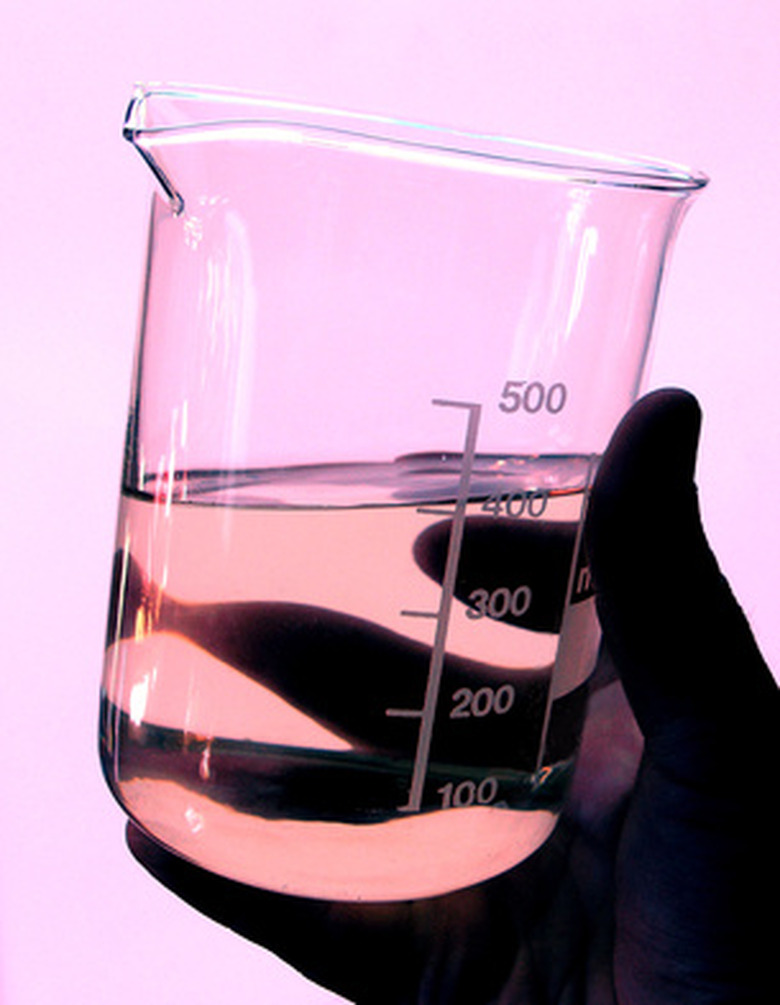What Does pH Mean In Chemistry?
The pH scale is a method for representing how acidic or basic a substance is. The scale seems counterintuitive at first glance, yet it is widely used in biology, chemistry, geology and other physical sciences. Communication in these fields requires an understanding of the concept of pH. Once understood, the pH scale is a useful index for communicating a critical physical property of substances.
Definition
Definition
pH, which is always written with a lowercase "p," is a scale of how much ionic hydrogen is in a substance. The scale runs from 0 to 14. Completely pure water has a pH of 7, which is neutral. The lower the number on the scale, the more acidic the substance is. The higher the number on the scale, the more basic, or alkaline, the substance is. Substances that are extremely acidic or basic tend to be corrosive, or burn-causing. The scale is logarithmic, meaning that it is based on tens. Thus, a substance with a pH of 4 is 10 times more acidic than a substance with a pH of 5.
Calculating pH
Calculating pH
Mathematically, pH means the negative log of the concentration of hydrogen ions in a substance. This takes the concentration of hydrogen ions in a substance and converts it to a value on the pH scale, where it can be better understood. The concentration of hydrogen is found in the form of molarity, or moles per liter. Then, the negative log of the concentration is taken. So pH in chemistry is a streamlined way of representing how many hydrogen ions are in a given substance.
An Example
An Example
For example, if a sample is 1 L and has 0.02 g of hydrogen in it, you can calculate its pH. You must first determine its molarity. Because a mole of hydrogen is roughly 1 g, 0.02 grams per liter is the same as 0.02 moles per liter, giving a molarity of 0.02. In scientific notation, this would be 2 x 10^-2. So, the negative log of this number would be the exponent with a negative sign in front of it (–2 = 2). Thus, the pH of this sample would be 2.
Finding pH through pOH
Finding pH through pOH
You can also use an indirect way to measure pH. If you know the pOH, you can calculate the pH. The pOH is the negative log of the hydroxide, or OH- group, ion. Because of the way hydrogen and hydroxide interact, the pOH is essentially the reverse of the pH. So, if you know the hydroxide concentration, you can calculate the pH with the equation 14 – pOH = pH. For example, if a substance has a pOH of 12, it would have a pH of 2. You can apply the same principal in reverse to find pOH from pH, using the formula 14 – pH = pOH.
Cite This Article
MLA
Boumis, Robert. "What Does pH Mean In Chemistry?" sciencing.com, https://www.sciencing.com/ph-mean-chemistry-7800255/. 24 April 2017.
APA
Boumis, Robert. (2017, April 24). What Does pH Mean In Chemistry?. sciencing.com. Retrieved from https://www.sciencing.com/ph-mean-chemistry-7800255/
Chicago
Boumis, Robert. What Does pH Mean In Chemistry? last modified August 30, 2022. https://www.sciencing.com/ph-mean-chemistry-7800255/
